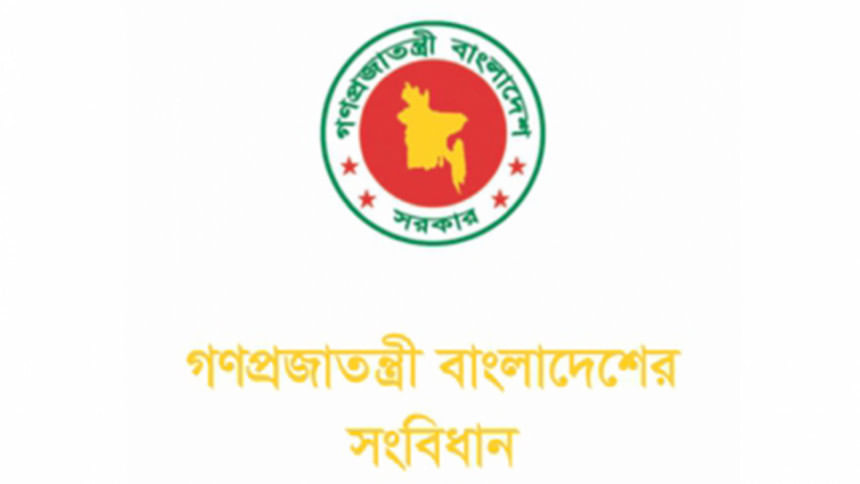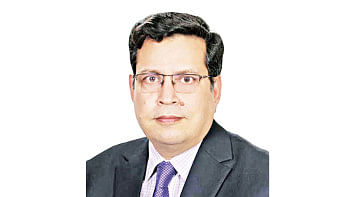Story of how independence of judiciary slowly undermined

Separation of judiciary from the executive organs of the State was announced as one of the fundamental principles of the State policy in Article 22 of the new constitution of Independent Bangladesh.
The constitution which came into force on December 16, 1972, empowered the Supreme Court to lead the judicial organs of the country with having full control over the lower tier of judiciary.
The chief justice was also given authority regarding to the appointment of judges for the Supreme Court as he was consulted by the president to make any appointment to the higher judiciary.
The constitution had also stressed the need for enacting a law detailing qualifications in addition those stipulated in the constitution for individuals willing to be judges of the apex court.
All those constitutional provisions were aimed at establishing an independent judiciary by keeping it free from interference by the government.
FIRST CHANGE
But the fourth amendment in 1975 brought drastic changes to the constitutional provisions pushing the matter in the opposite direction, by allowing the executive branch to control the judiciary.
The fourth amendment switched over to the presidential form of the government-led by an all-powerful president from the parliamentary system.
The president was empowered to appoint judges for the Supreme Court without any consultation with the chief justice as the provision for consultation was deleted.
He was also given the authority to remove a SC judge on grounds of misconduct or incapacity, by curtailing the parliament's power to this regard.
The Supreme Court has denied the power to appoint judges to the lowers courts and to have control over them including promotion, postings and disciplinary actions. Instead, the president was given all these powers.
DARK EPISODE
The violent change over of the power in August 15, 1975 put the country under martial law. The constitution was made subservient to the martial law proclamation and orders. The bloody changeover saw the seeds for trampling further the independence of judiciary.
The martial law regime-led by General Ziaur Rahman amended the constitution through martial law proclamations introduced Supreme Judicial Council to remove a SC judge curtailing the power of the president.
His regime also amended article 116 introducing a provision which said in exercise of his powers to control and discipline of persons employed in the subordinate courts, the president will consul with the SC.
The second martial law regime led by Gen Ershad brutally bulldozed the independence of judiciary. The Supreme Court ceased to derive any power from the constitution that was suspended following the martial law proclamation announced on March 24, 1982.
People's fundamental rights were suspended. They were not allowed to go to the court seeking remedy against violation of any right.
Through an amendment to the martial law proclamation, Ershad seized the power to make appointments to constitutional posts of the chief justice and judges of the Supreme Court.
A person appointed to any constitutional post would have to take oath to perform duties with honesty in accordance with the March 24 martial law proclamation.
In January every year, the SC was to submit an annual statement to the Chief Martial Law Administrator (CLMA) giving the number of cases instituted or filed and disposed of by its all divisions in the preceding year.
The CMLA Ershad held the authority to remove the chief justice on grounds of incapability to function.
The martial law tribunals constituted to hold trials of various offences became superior to other courts.
According to the martial law regulations, the law declared by the Appellate Division would have bindings on the High Court Division while the law declared by either division would have bindings on all courts, other than martial law tribunals.
DEMOCRACY RESTORED, NOT FULL INDEPENDENCE OF JUDICIARY
Restoration of parliamentary democracy in 1991 after the fall of autocratic Ershad regime yielded little desire results for the judiciary.
Successive political governments since 1991 refrained from ensuring separation of judiciary from the executive branch of the government. Both AL and BNP-led past governments took around two dozens of times to implement a Supreme Court verdict to separate the judiciary form executive. This allowed admin officials to hold trials by exercising the judicial powers.
During the past caretaker government, the lower judiciary was officially separated from the executive branch on November 1, 2007 following the Appellate Division's directives in a case known as "Masdar Hossain's Case".
Laws were amended and new rules were framed for that purpose as well. However, the constitution was not amended to ensure effective separation.
But when the constitution was amended in 2011, nothing much was done to ensure effective separation of the judiciary.
The Awami League-led government preferred to retain control over the lower judiciary by incorporating afresh in the constitution the provision introduced by the martial law regime-led by Gen Zia. This provision which was made through martial law proclamation and validated in the fifth amendment ceased to effect as the Supreme Court scrapped the constitution's fifth amendment.
The 2011 constitution amendment also retained the Supreme Judicial Council. But it was scrapped in 2014 by the 16th amendment of the constitution empowering parliament to remove SC judges. The amendment also restored the provision that says the president will consult with the chief justice to appoint SC judges. But the law on the appointment of SC judges has yet to make.
The SC on several occasions urged the government to restore the provisions of the original constitution of 1972 for effective separation of judiciary from the executive. But nothing happened.
The current constitutional provisions provide the SC with conflicting authority to have control over the lower judiciary.
Article 109 of the constitution says the High Court, a division of the SC, will have superintendence and control over all courts and tribunals subordinate to it.
But Article 116 vests the powers in the president to control and discipline of persons employed in the subordinate courts and tribunals and the president will exercise the powers in consultation with the SC.
The articles 109 and 116 has created "dual rule" in the judiciary.
This situation allows the government to retain the powers over controlling of the lower courts despite an official separation of judiciary from executive branch nine years ago.

 For all latest news, follow The Daily Star's Google News channel.
For all latest news, follow The Daily Star's Google News channel. 



Comments